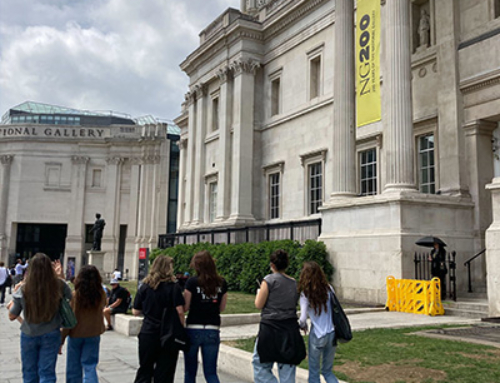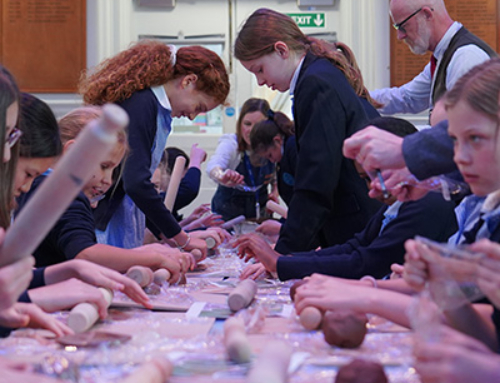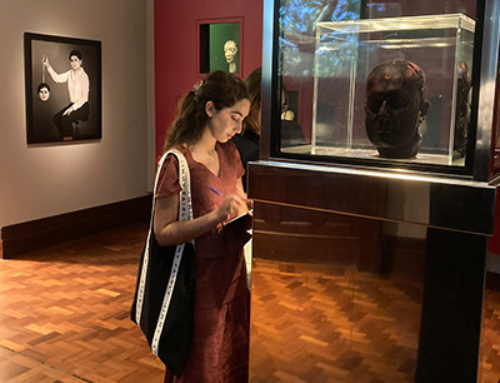This week, Ms Carr-Gomm looks at Botticelli’s ‘Venus and Mars’.
Botticelli, Venus and Mars, c1485, 69 x 173 cm, National Gallery London
“Venus and Mars is an antidote to Bronzino’s allegory and a message for our time. Botticelli’s paintings are very distinct; he likes pretty girls with blond ringlets in wafty, see-through dresses and beautiful men with knobbly knees. The four little satyrs in the painting take us to the world of mythology and they are cheekily playing with a lance and armour so we can identify the sleeping man as Mars, the god of war; not even a conch blowing in his ear will wake him up. There is nothing to identify the reclining woman on the left as Venus, no cupid, no doves and she’s not even naked as she usually is, but she and Mars were lovers, so Venus she is. Their affair was illicit as Venus was married to Vulcan and yet here, somewhat strangely, she is modest and demure.
The painting is an odd rectangular shape and was probably set into a piece of furniture, a bed perhaps, or into the panelling of a room. Around Mars’ head are wasps as a little visual pun: vespa is a wasp in Italian* and the emblem of the house of Vespucci. It is possible that a male member of this prominent Florentine family commissioned the painting to commemorate his marriage and welcome his bride. Perhaps he is likening his new wife to Venus and while she and Mars are together and his armour is off, he makes love not war and all is well with the world.”
*hence the Italian scooter brand














